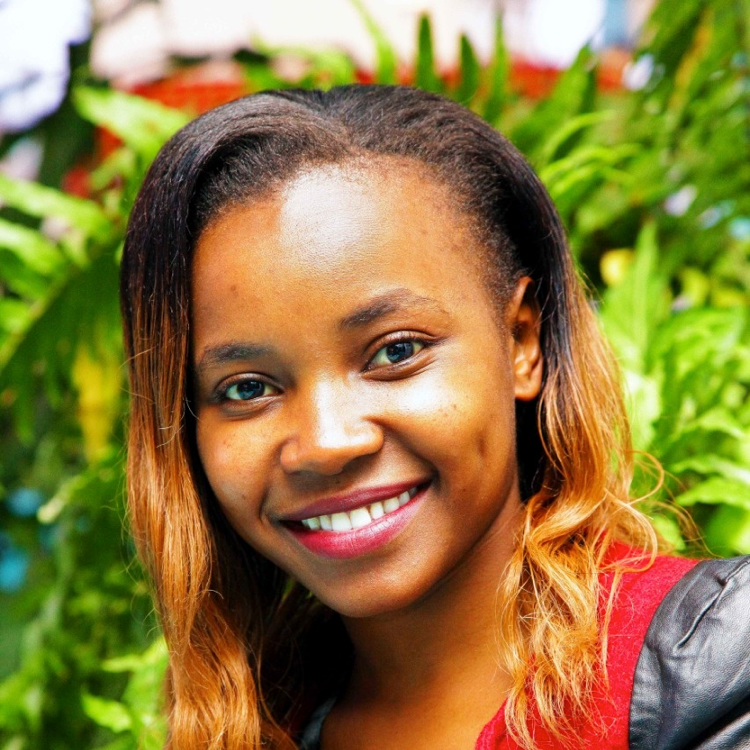Matted and woolen each strand full
Ropes tightly turned and twisted
Fingers sift through at times tugging
Do not test my mouth
I am protective Silky girl
You may turn to rock
I beg, leave my extensions of being
For me and my Black self.
- Akelo
For years, we Africans have been taught and told to hate our hair simply because it is different from other races’. It was perceived primitive and unprofessional to have braids in the modern world, forcing women to straighten their hair just to fit in. This created a divide, double standards, cultural appropriation and ignorance among many, leading to confusion when trying to understand the heritage behind braided hairstyles.
The history of hair braiding in African culture can be trailed back 5000 years to 3500 BC. Initially introduced by the Himba people of Namibia - who are famously known for their red matted braids, formed from a mixture of animal fat, ash and ground ochre, a stone found locally. The Himba used this practice to lessen the damage of the harsh environment they faced, causing water scarcity.
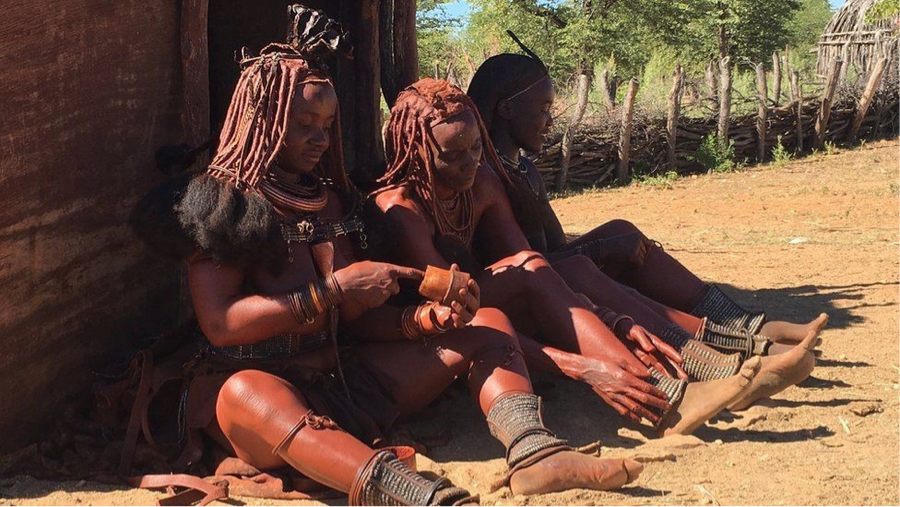
Himba women wearing their famous red matted braids as they apply red paint on their bodies. Photo courtesy of BBC.com
In Kenya, there has been tremendous evolution regarding how we used to wear our hairs in braids since the 1910's. Hair was used as an illustrative depiction of our tribes, religion and culture, age, class and rank in the community. During colonialism, the people of Kenya were proud to wear their hair short, accessorized with simple head gears to help identify their various tribes. For example, the Maasai and Kikuyu community would wear their beaded head-gears and their matted braids
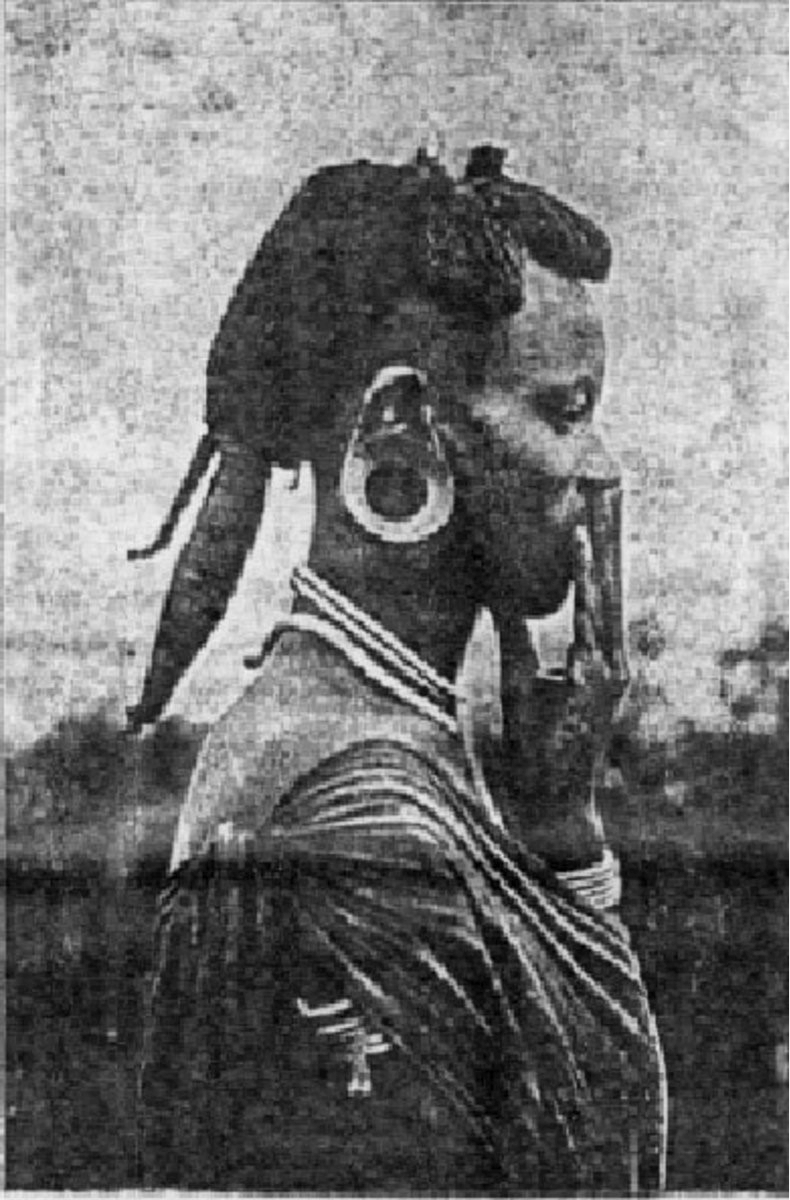
A kikuyu man wearing his matted pony tail in the colonial period. Photo courtesy of the secret museum of mankind
Modern Styles and Extensions
The evolution of braiding culture came with the rise of artificial hair extensions weaved into various representative hairstyles. Hair extensions consolidated the look and further gave it justice by mimicking the texture of African hair, maintaining its identity. Popular hair brands have been able to give Kenyans a variety of extensions to choose from, personalized to the consumers hair type.
Thanks to the internet, you can now go online and get the best professionals to give you neat cornrows that can serve you a look. My go to place is mainly Nairobi’s river road area where I have been a loyal customer. This is because it is easier to buy different brands of hair extensions from many cosmetic and beauty shops nearby, and it is also easy to find a professional who is well exposed to braiding different patterns.
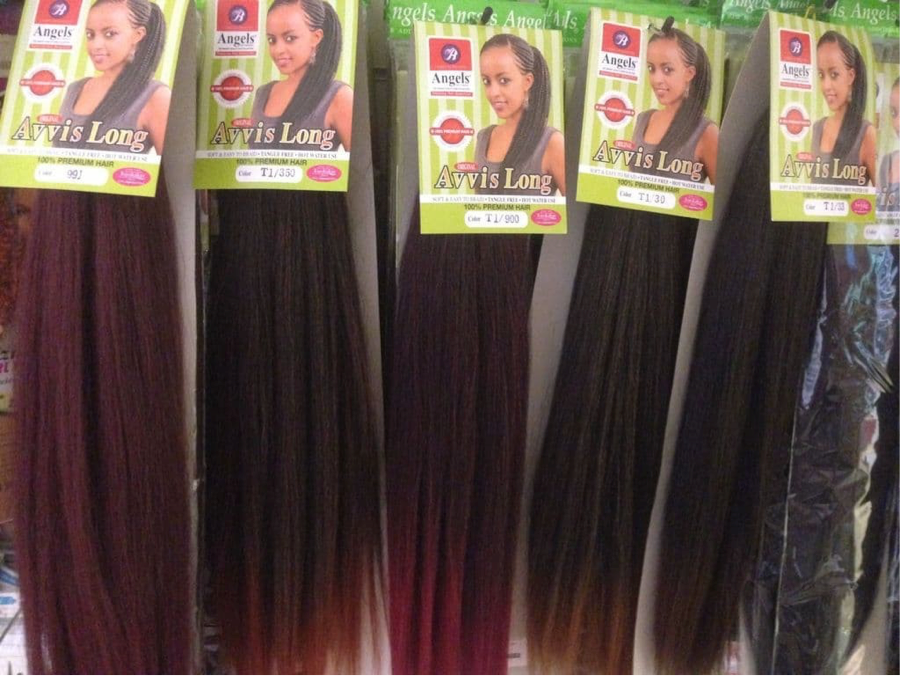
Image of hair extensions that are used for braiding. Photo courtesy of: Gift hair collection
The Experience
My experience with hair braiding can be traced way back to when I was born in 1994, when I was just a few months old. My mum began braiding my hair the minute she noticed that her baby girl had some bit of hair growing on her small head. It is actually a good thing she saved all these photos of my mini self with a few etched cornrows on my head. She says, it was the simplest way to protect my scalp because my hair would tangle, causing hair loss and breakage when combed.
Growing up, I can recall how common braiding styles such as cornrows, box braids and dreadlocks were all the rage. It’s probably because they were the easiest hairstyles to achieve- especially cornrows- which date back as far as 3000 B.C.. It is also classified as a protective hairstyle which is why Africans have been able to maintain their hair stress free and ensured proper hair growth, as they seal the hair, protecting it from moisture loss and breakage. It Is also safe to say that, the same braiding styles are not only witnessed in Kenya, but all over the world, with unique tweaks, refined to the customers’ taste.
Braiding my hair was not my favorite thing when I was young, because all I could think about was playtime. However, all this changed when I got to the University. I finally had the freedom to wear my hair as I pleased with no more school restrictions. I had my first weave when I was at the university and thanks to my mother, I had the best first experience with weaves and learned that it was also a great protective hair style. Let's just say from there, everything about hair become exciting and a beautiful journey of discovery.
Cornrows
Cornrows, have been able to beat the test of time and the hairstyle is among the most ancient braiding hairstyles in history. Cornrows have been dated back to 3000 B.C from the Horn and West coasts of Africa. The tradition of braiding cornrows was used to identify a particular tribe or status in the society.
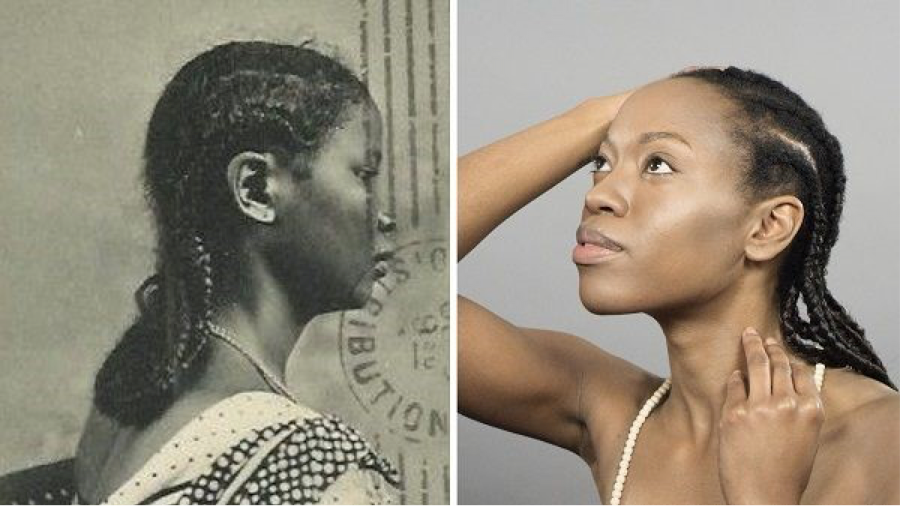
Photo: Courtesy of Kenyahapa.com
I remember back in Primary school, I would have to go to the salon to get my hair braided into cornrows. There is a common policy in most public primary schools that encourages cornrows, but some are extreme with their policies – asking their students to shave their hair. Teachers enforced these policies and continue to do so till now, citing that cornrows were an easier way for us to manage our hair and look neat. Honestly, it was easier than having to comb my hair every morning and saved me a lot of time.
In Kenya, cornrows have now evolved into a lot more than just plaiting our hair backwards, made possible with the creativity behind various hairstyles and patterns, as well as, the worldwide trends catering to African hair. It finally feels like black hair is being worn proudly again. Now, when you visit a professional salon, it is a less tedious process and it takes up less time. With dexterity they are able to blend your natural hair with extensions that take into account the texture, colour and type of your natural hair.
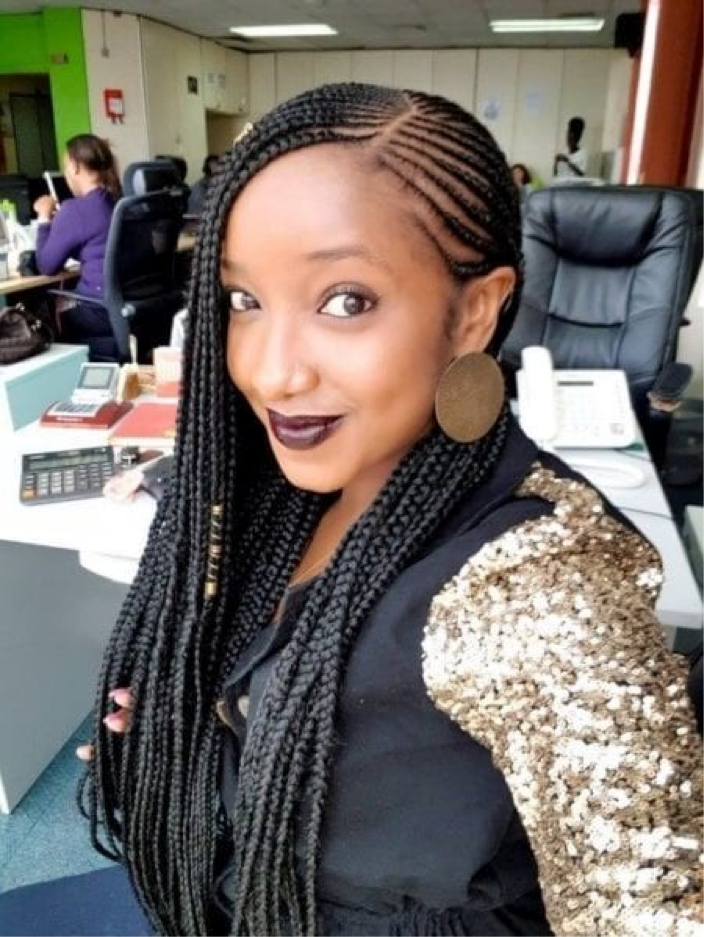
Famous Fashion Journalist in Kenya Annita Nderu rocking two different patterns of cornrows. Photo courtesy of: Black Hair hub
Box braids and Twist Braids
Box braids originated in South Africa and can be traced back to 3500 B.C.. I have to confess that, this was the first braiding style I was able to nail on my own at a young age. It is quite popular and the preferred protective go-to hairstyle for many. The box braids are also known as 'Rasta' in Kenya, and have been in fashion for a long time. I remember having them when I was young during the school holiday breaks and Christmas period, I still get them today as I love the diverse styles I can pull off with them.
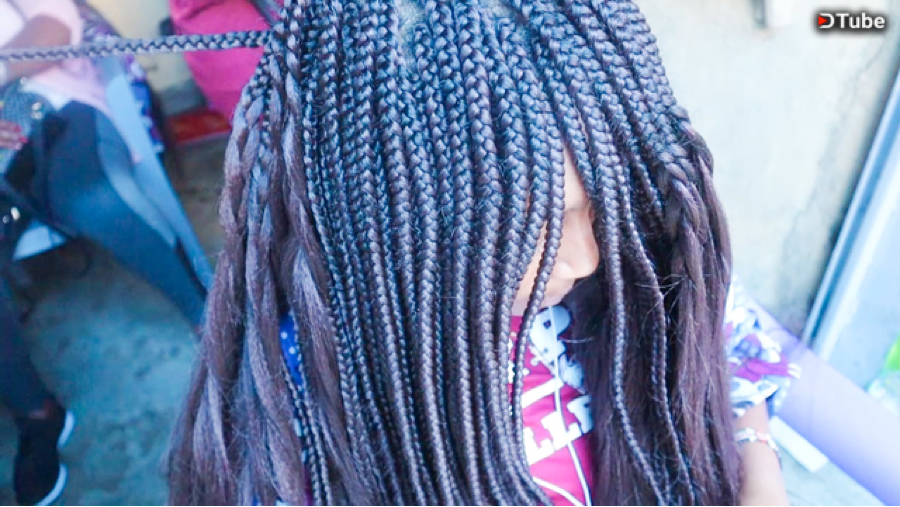
A woman getting box braids in Kenyatta market. Photo courtesy of: steemkr.com
Twist braids are similar to box braids but are different in the way they are plaited with two strands of braid instead of three. In my opinion, I find twist braids a bit painful and uncomfortable as there is certain grip to the roots, which at times proves to be irritating. But when you get used to having them, they are easy to style and have a pleasant look.
Back in the day, there was not much to do with twist and box braids, other than push them to the back and hold them with a rubber band or just let them loose and free. With Youtube tutorials, people have come up with different and creative ways to style twist and box braids to give them a fresh look each time you step out.
Kenyatta market and Umoja market are the most famous for plaiting box and twist braids that have a clean finish, and are well worth the money you pay. If you have ever had box or twist braids plaited on your hair, you know they take time and you have to clear up your schedule for that day. However, the good thing with Kenyatta Market, there are several hair technicians assigned to braid, which decreases the duration it would usually take.

A woman getting twist braids at Kenyatta Market. Photo courtesy: Hopeshi blog
Dreadlocks
In Kenya, Mau Mau freedom fighters were famously known for their dreadlocks in the 1950's. This hairstyle was common among the freedom fighters during the colonial period, under the British colony and was used as a survival tactic in the forest against lice, and to intimidate the British troops. The name ‘Dread’ was given (or so the tale goes) to the Mau Mau fighters hiding in the bushes to scare the European invaders.
It cannot go without mention that dreadlocks in fact originated in Africa, even though it is widely linked with Rastafarianism, symbolizing unity, non-violence communalism and socialistic values of the hairstyle.
The Masaai tribesmen - one of the oldest African tribes, dating back to the 1800 B.C. - continue to preserve their culture to date against any western influence. The men would wear their locs when they reach the Moran stage (becoming a warrior) under the spiritual direction of a ‘laibon’ (medicine man). Which explains the spiritual connotations associated with the hairstyle world-wide.
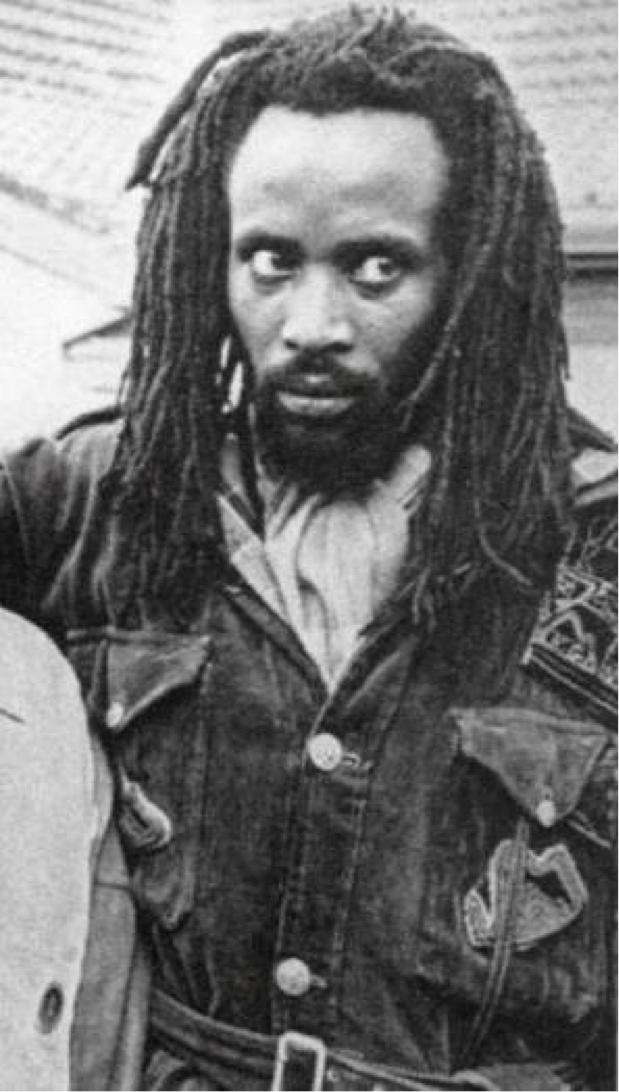
Mau Mau Freedom fighter Dedan Kimathi. Photo courtesy of: stopthemaangamizi.com
Dreadlocks were not an acceptable way to present yourself in the Kenyan community, it was frowned upon and they were deemed filthy and associated with people committing crimes (a controlled narrative, that served the colonist). However, that has come to pass as more and more Kenyans are now embracing the culture.
Locs, are now a fashion statement in Kenya and with new advanced styles, people can now have artificial dreadlocks installed as a protective hairstyle that can last for a year. Although it is costly and time consuming to install dreadlocks, you can be sure they are always in style in Kenya. Nazizi, a famous musician in Kenya from the group Necessary Noise, has been rocking her dreadlocks since she was discovered as an artist.
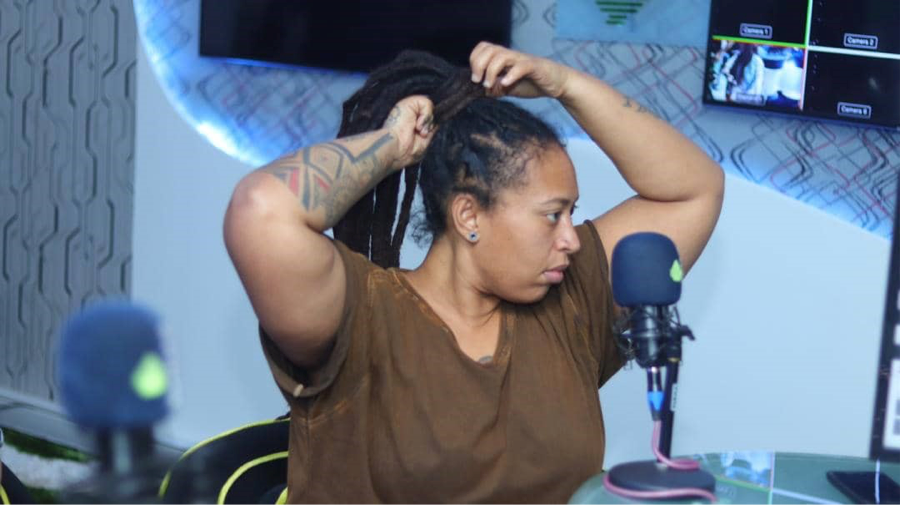
Kenyan Musician and Radio Host Nazizi still in fashion with her dreadlocks from back in the day. Photo courtesy of: Matooke Republic.
It is now socially acceptable for both genders to plait their hair in Kenya unlike in the 2000's when only females were seen rocking the braided hair-dos. However, in modern day, the stereotyping nature of it being exclusive to females has been lost. Braiding is now used by male musicians to stay in fashion, and as a form of self-expression.
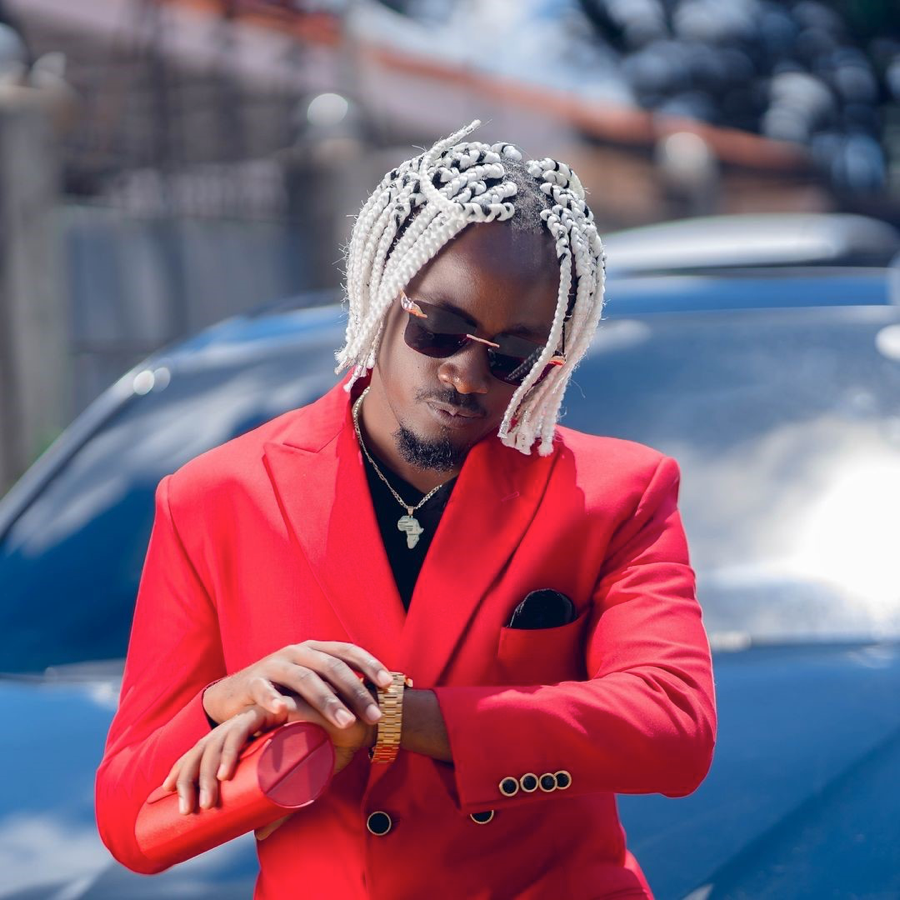
Famous Kenyan Artist Bahati, plaited white box braids for his music video. Photo Courtesy of: The Big Issue
Even though, it has taken a long time for schools and the corporate world in Kenya to accept – at a high cost - dreadlocks in institutions and official work spaces, some companies are warming up to the idea and we can at least see some changes in media offices. The High Court of Kenya ruled that Rastafarian students can wear dreadlocks in school after John Mwendwa a Rastafarian man, sued Olympic High School in Kibera, for refusing to admit his 15-year-old daughter because of her dreadlocks.
Braiding can also be integrated with hair beads, rings and cuffs to give the braids a fun look. Back in the day in Kenya, hair beads were mostly used on Kids. Nowadays, many adults had adopted the fashion trends integrating artwork in their braids like flags and emojis.
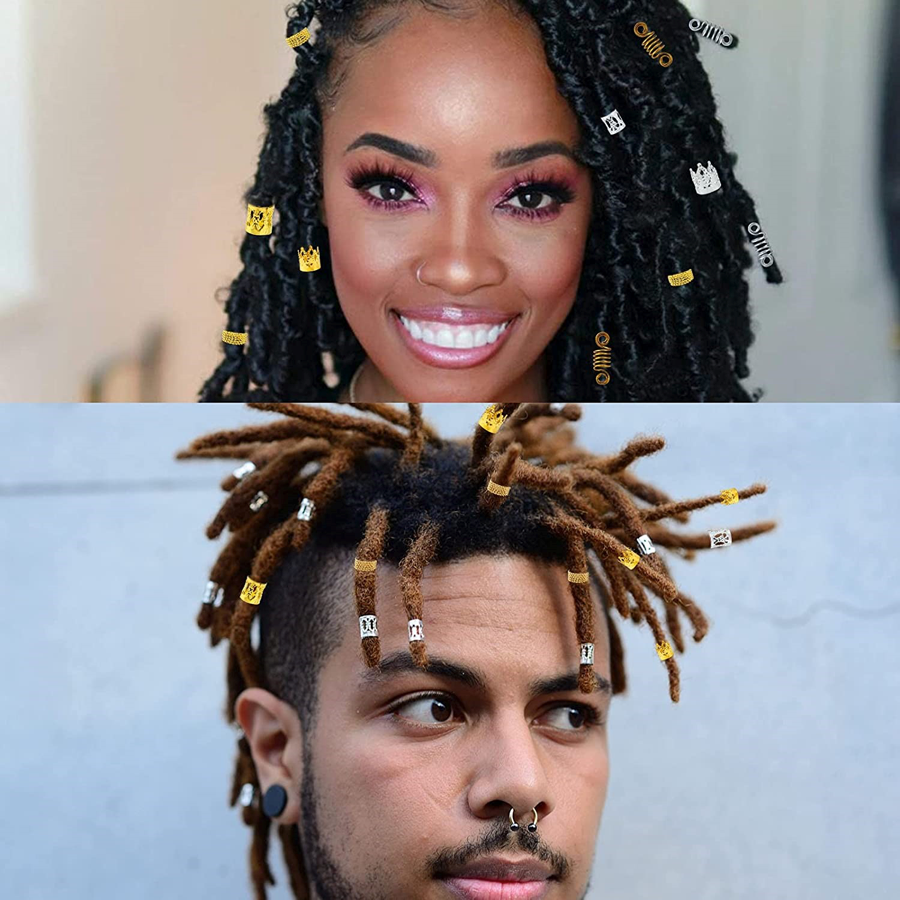
Image of a lady and a gentleman accentuating their braids with hair rings and Cuffs. Photo courtesy of Ubuy Ubuy
These unique braids were created by the African communities for the afro-textured hair. Mainly because they go hand in hand with our oily, kinky and extremely curly hair. It is seen as cultural appropriation by people of African descent when non – African people find it okay to wear braids without understanding why and where this particular culture began or came from.
Watching television while growing up, I was convinced about having straight hair and struggled for long with a beauty standard that didn’t represent me. Many girls were forced into the same belief, that our hair was simply unfit. And while I did cave in and relax my hair, I ended up regretting it because I did not know how to take care of relaxed hair. I can now confidently say that I am comfortable with my natural hair and appreciate all the products out there that have been created for natural African hair.
The African hair is beautiful and unique in its own way. It gives all those of African decent a chance to celebrate their commonality and heritage. The kinkiness of our hair, the curls, the shrinkage and the different textures we all have is part of our beauty. Braiding culture has created a bonding platform for Kenyans and the world at large, and this unique form of art has acquired the recognition it deserves.
